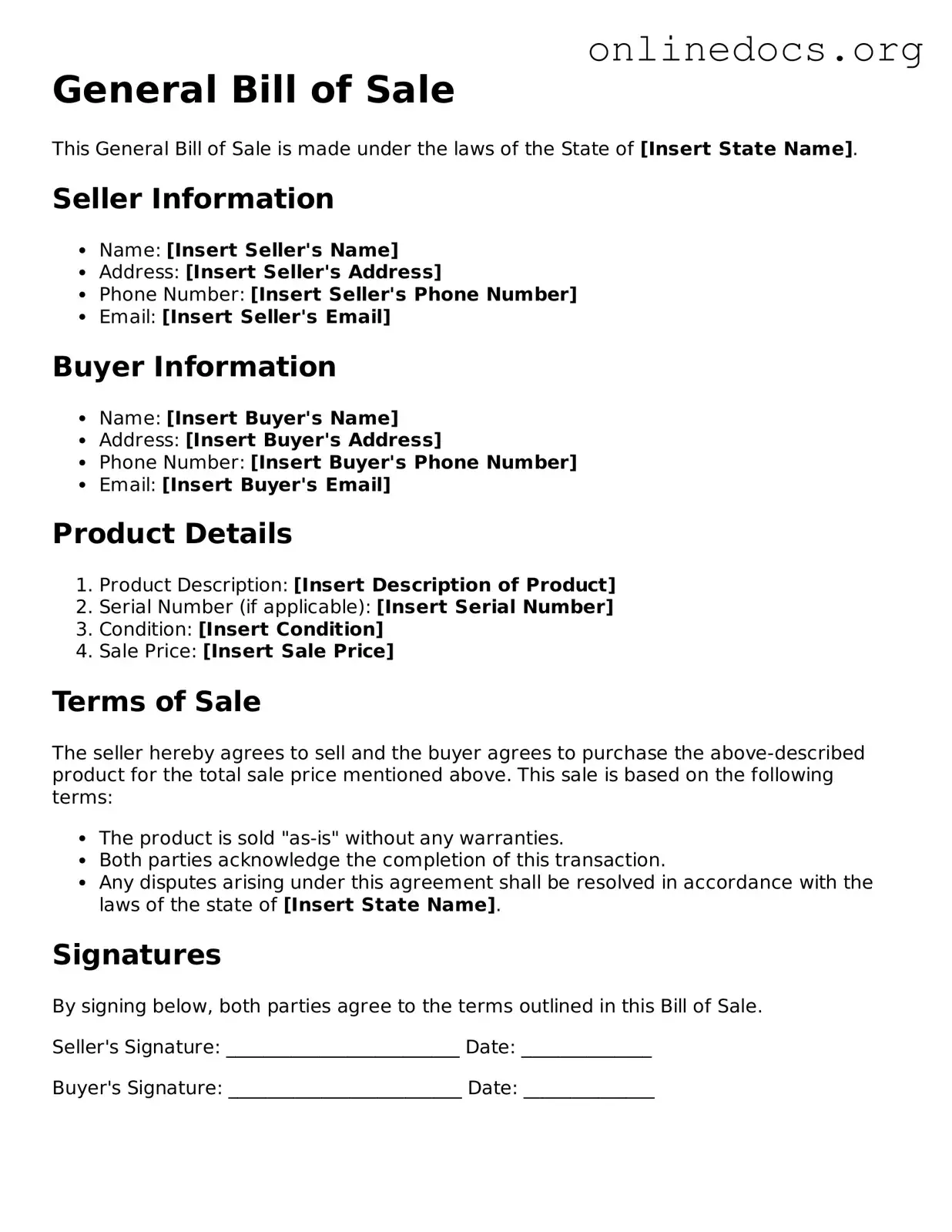The General Bill of Sale form shares similarities with the Vehicle Bill of Sale, which is specifically designed for the transfer of ownership of motor vehicles. Like the General Bill of Sale, this document outlines the details of the transaction, including the identities of the buyer and seller, a description of the vehicle, and the sale price. Both forms serve as proof of ownership transfer and can be critical for registration purposes. The Vehicle Bill of Sale often includes additional information such as the vehicle identification number (VIN) and odometer reading, making it more tailored to the nuances of vehicle transactions.
Another document that resembles the General Bill of Sale is the Personal Property Bill of Sale. This form is utilized for the sale of tangible personal property, such as furniture, electronics, or equipment. Similar to the General Bill of Sale, it records the names of the parties involved, a detailed description of the item being sold, and the agreed-upon price. Both documents function as legal proof of the transaction, ensuring that the buyer has a legitimate claim to the property. The Personal Property Bill of Sale may also include warranties or representations about the condition of the item, which can be crucial for buyers seeking assurance.
The Real Estate Purchase Agreement is another document that, while more complex, shares some foundational elements with the General Bill of Sale. This agreement outlines the terms under which real property is bought and sold. Like the General Bill of Sale, it identifies the parties involved, describes the property, and states the purchase price. However, the Real Estate Purchase Agreement typically includes additional provisions related to financing, contingencies, and closing procedures. Both documents are essential for establishing the legal transfer of ownership, but the Real Estate Purchase Agreement delves deeper into the intricacies of property law.
When dealing with the sale of a motorcycle, it is essential to utilize a properly completed document, such as a Motorcycle Bill of Sale form, which acts as a legal proof of transfer of ownership, ensuring that both the buyer and seller are protected and that all transaction details are clearly outlined.
Lastly, the Lease Agreement is akin to the General Bill of Sale in that it formalizes a transaction between two parties, though it does so in the context of renting rather than selling. This document specifies the terms under which one party may use the property of another for a set period, often in exchange for payment. While the General Bill of Sale transfers ownership, the Lease Agreement grants temporary possession. Both documents require clear identification of the parties, a description of the property, and the terms of the agreement, ensuring that both parties understand their rights and obligations. The Lease Agreement may also include clauses about maintenance and repairs, which are not typically found in a Bill of Sale.
